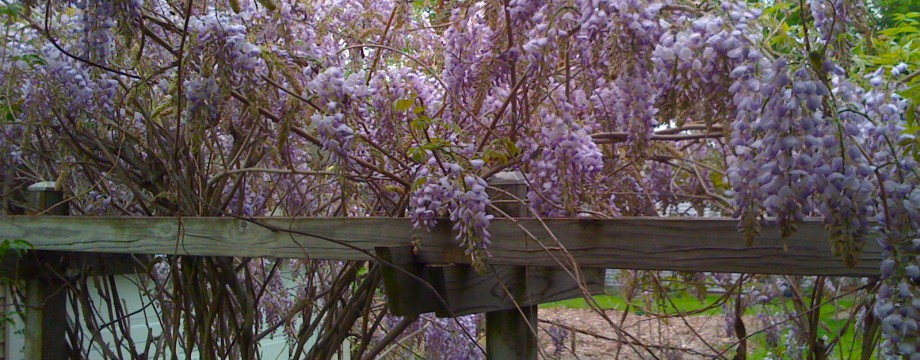A new gardening year will start tomorrow. Our Huning Highlands Community Garden is having its spring work day. Today the chickens will be shooed out of the garden. All winter long they have been digging in the dirt in search of whatever it is chickens search for in the dirt.. Tomorrow we will rake all that loose soil back into rows. We will add compost to each row. Some tall people with ladders will put up the shade structure – strips of cloths suspended overhead to provide some relief from the unrelenting summer sun. Others will laid the drip lines. And another season of gardening will begin.
I no longer have a big yard that I can plant any which way. I now only have a row (or two). There are rules: no mint, no squash, …
I remember those days of my ever growing garden, some years organized into rows, some years more of a mish–mash.
Can I still capture the spirit of a jumbled garden within the structure of two rows? We’ll see …
When I first planted my large vegetable garden in 2009, I had such grand plans for being organized and systematic. I decided on a nice orderly layout with all my rows going east–west. Based on my reading in John Seymour’s book, “The Guide to Self–Sufficiency,” I planned on a rotation sequence and sketched out the layout for the next few years in my gardening notebook. Everything was going to be perfect.Then my nice orderly system began falling apart. The kale reseeded itself and started growing out beyond its nice straight row. I was thrilled with this perennial behavior, so I didn’t make any attempt to tame the wild growth back into a row. A volunteer grape appeared and I didn’t have the heart to remove it.I again planted most things in east–west rows but I added some north–south rows for interest. I made a path through the garden that had a pleasing zig–zag. And I expanded the garden area. I did rotate some of the crops, but not in the systematic way that I had planned the previous year.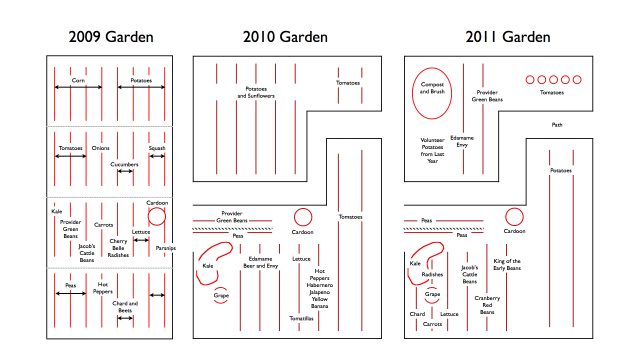 By 2012, cardoon plants were springing up around the main plant; the kale was growing every which way; and an asparagus stalk appeared, unbidden, in the middle of the garden. The northeast edge of the garden was so shaded by the maple tree that it was not suitable for any of my planned vegetables and became a messy repository of twigs, branches and compost.
By 2012, cardoon plants were springing up around the main plant; the kale was growing every which way; and an asparagus stalk appeared, unbidden, in the middle of the garden. The northeast edge of the garden was so shaded by the maple tree that it was not suitable for any of my planned vegetables and became a messy repository of twigs, branches and compost.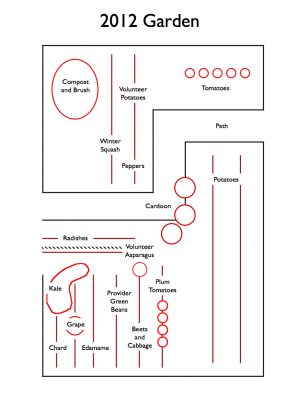 To be honest, I was becoming a bit bored by the orderly rows. And then I read about the edible forest garden. I was intrigued by photos of such gardens with their varied vegetation at different heights. These gardens were not planted in nice neat rows. They also were not traditional annual vegetable gardens. I still wanted an annual vegetable garden, but I wondered if I could create the garden with more visual interest. So I threw all orderly plans to the wind, pulled out scraps of wood and began playing.
To be honest, I was becoming a bit bored by the orderly rows. And then I read about the edible forest garden. I was intrigued by photos of such gardens with their varied vegetation at different heights. These gardens were not planted in nice neat rows. They also were not traditional annual vegetable gardens. I still wanted an annual vegetable garden, but I wondered if I could create the garden with more visual interest. So I threw all orderly plans to the wind, pulled out scraps of wood and began playing.
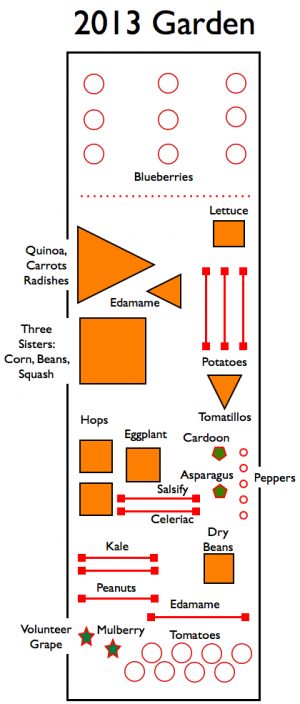 For two Saturdays, I worked in the garden, laying out little beds of different shapes here and there, and dropping down some raised beds wherever I wanted. It felt more like play than like work. I had fun staking an area in some interesting shape, stepping back, contemplating, then rearranging, and then repeating the entire process.
For two Saturdays, I worked in the garden, laying out little beds of different shapes here and there, and dropping down some raised beds wherever I wanted. It felt more like play than like work. I had fun staking an area in some interesting shape, stepping back, contemplating, then rearranging, and then repeating the entire process.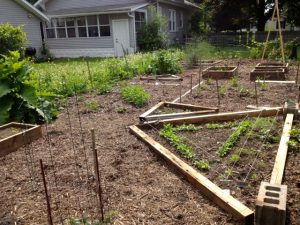
And so my garden area evolves. And, while I do admire the pristine look of an English garden, apparently my natural tendency is toward a more haphazard look.
For now, I am done. And not even I know what next year’s garden will look like.
 By 2012, cardoon plants were springing up around the main plant; the kale was growing every which way; and an asparagus stalk appeared, unbidden, in the middle of the garden. The northeast edge of the garden was so shaded by the maple tree that it was not suitable for any of my planned vegetables and became a messy repository of twigs, branches and compost.
By 2012, cardoon plants were springing up around the main plant; the kale was growing every which way; and an asparagus stalk appeared, unbidden, in the middle of the garden. The northeast edge of the garden was so shaded by the maple tree that it was not suitable for any of my planned vegetables and became a messy repository of twigs, branches and compost. To be honest, I was becoming a bit bored by the orderly rows. And then I read about the edible forest garden. I was intrigued by photos of such gardens with their varied vegetation at different heights. These gardens were not planted in nice neat rows. They also were not traditional annual vegetable gardens. I still wanted an annual vegetable garden, but I wondered if I could create the garden with more visual interest. So I threw all orderly plans to the wind, pulled out scraps of wood and began playing.
To be honest, I was becoming a bit bored by the orderly rows. And then I read about the edible forest garden. I was intrigued by photos of such gardens with their varied vegetation at different heights. These gardens were not planted in nice neat rows. They also were not traditional annual vegetable gardens. I still wanted an annual vegetable garden, but I wondered if I could create the garden with more visual interest. So I threw all orderly plans to the wind, pulled out scraps of wood and began playing.
 For two Saturdays, I worked in the garden, laying out little beds of different shapes here and there, and dropping down some raised beds wherever I wanted. It felt more like play than like work. I had fun staking an area in some interesting shape, stepping back, contemplating, then rearranging, and then repeating the entire process.
For two Saturdays, I worked in the garden, laying out little beds of different shapes here and there, and dropping down some raised beds wherever I wanted. It felt more like play than like work. I had fun staking an area in some interesting shape, stepping back, contemplating, then rearranging, and then repeating the entire process.
